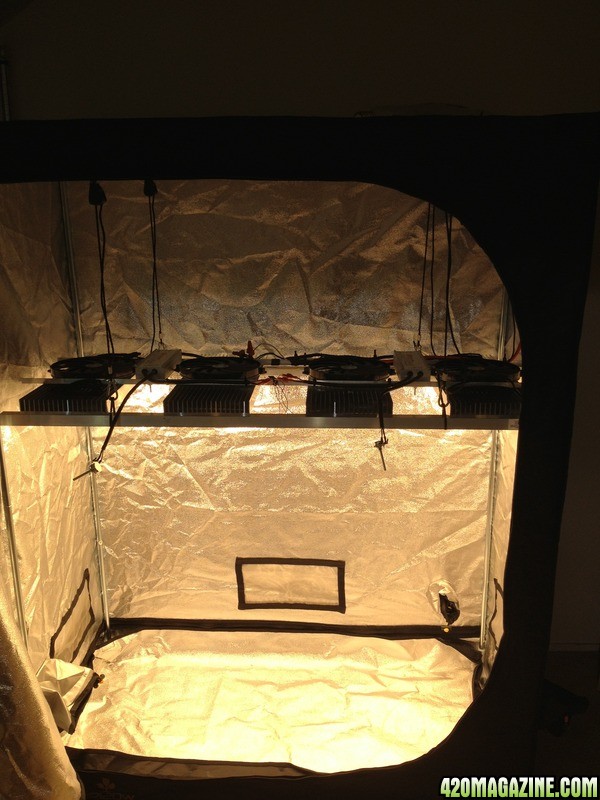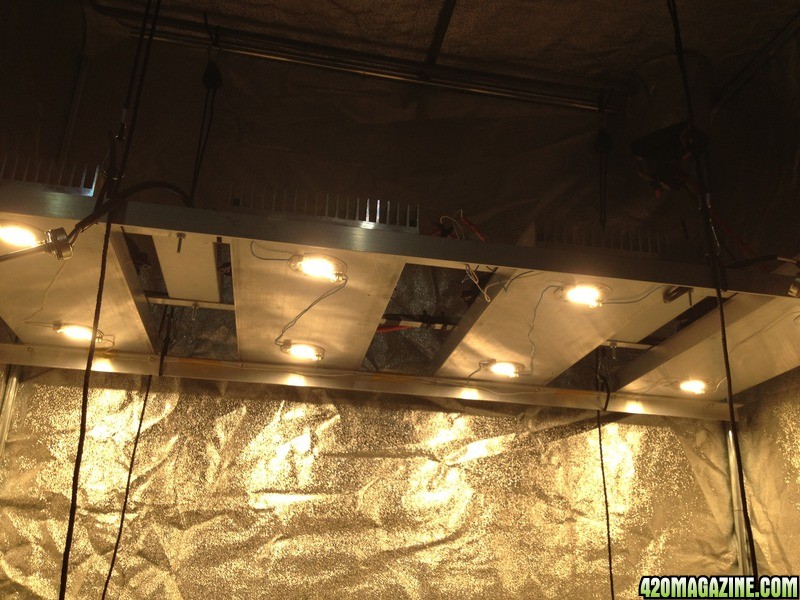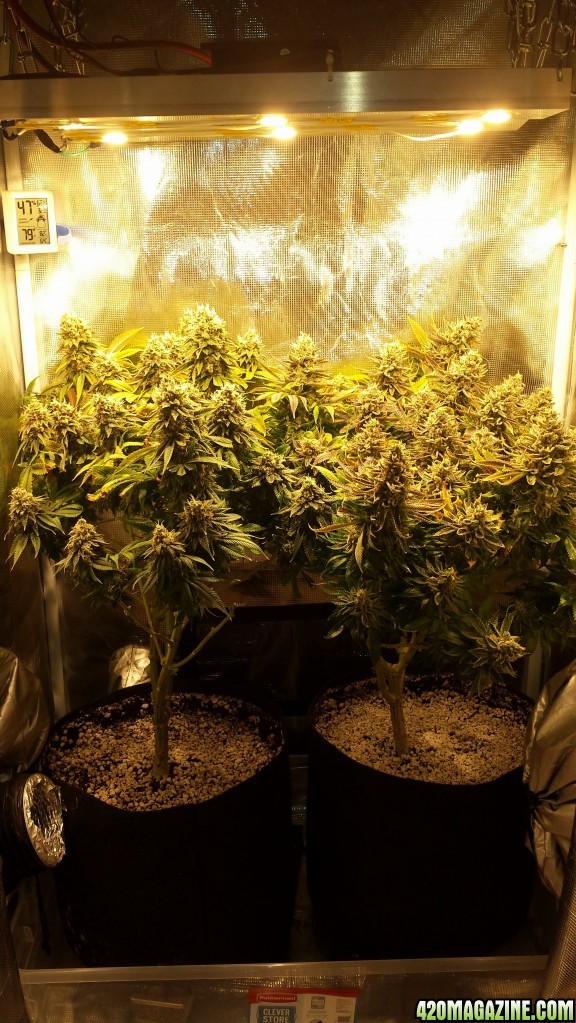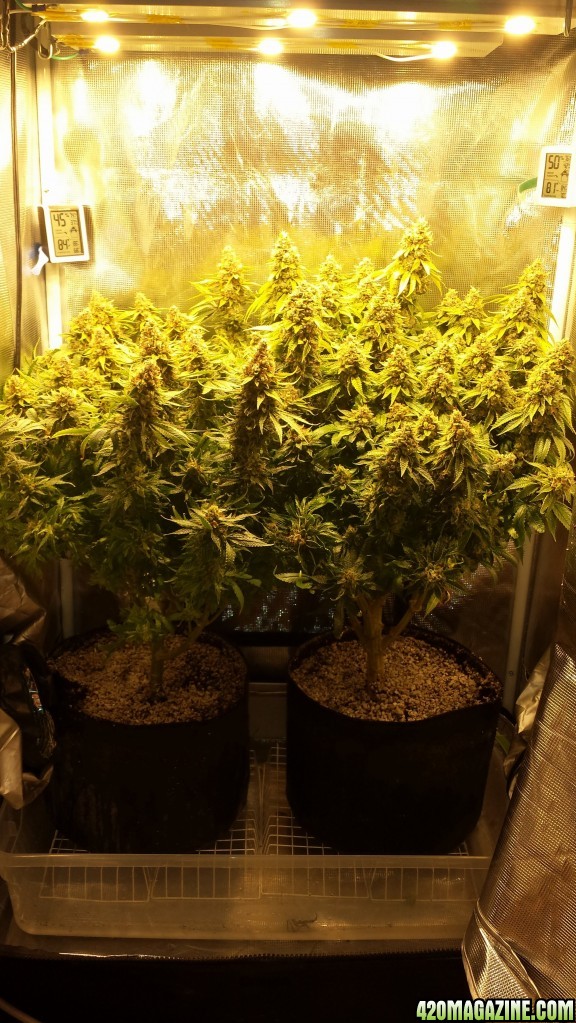- Thread starter
- #41
For your amusement, this link gives some info on a couple blurple lights... DIAMOND SERIES 200 WATT VS MARS II 400 WATT....
Thank you Dr. Fish
Those numbers are very terrible and tons of spectrum is missing.
Im throwing down over 1000 umols evenly no matter where you place the sensor @ around 18". (even on the edges)


Here is a friends grow that is only using 6 cxb cobs


Ill grab some pics of my crop next time. I just pulled a little over 12 zips of Gorilla Glue #4 from my 2x4 tent. I bet I hit a pound in my little tent with my Chem 4.



 HID rules, in that department.
HID rules, in that department.


 At $2/watt it's a great panel, though - I love it - great tech, very very low heat, very high efficiency. I think I saw 1.35 umols/watt? Versus 0.7-0.8 for HID? It's on the site.
At $2/watt it's a great panel, though - I love it - great tech, very very low heat, very high efficiency. I think I saw 1.35 umols/watt? Versus 0.7-0.8 for HID? It's on the site.